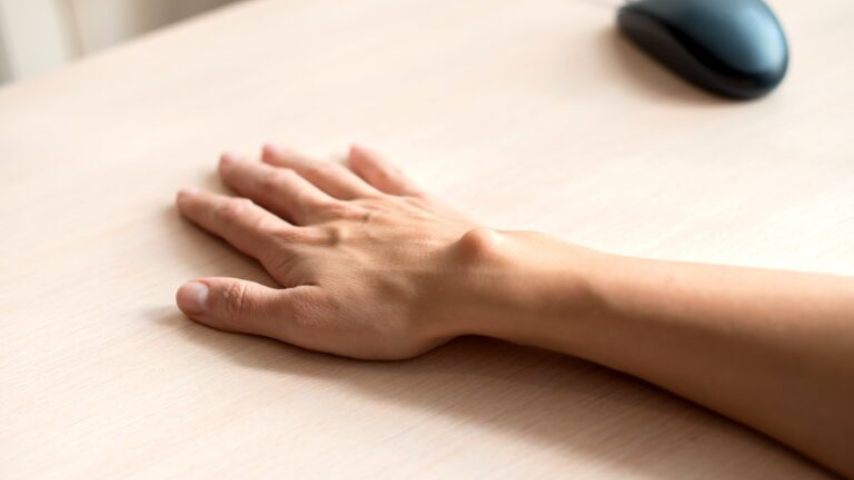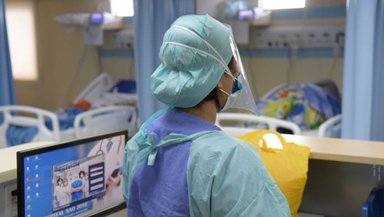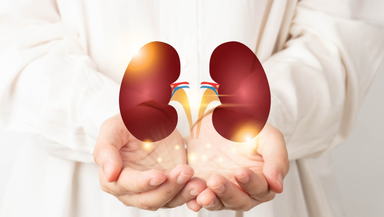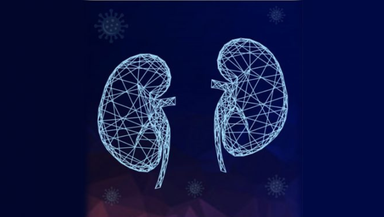Ganglion Cyst

Ganglion cysts are noncancerous lumps that most commonly develop along the tendons or joints of your wrists or hands. They also may occur in the ankles and feet. Ganglion cysts are typically round or oval and are filled with a jellylike fluid.
Small ganglion cysts can be pea-sized, while larger ones can be around an inch (2.5 centimeters) in diameter. Ganglion cysts can be painful if they press on a nearby nerve. Their location can sometimes interfere with joint movement.
If your ganglion cyst is causing you problems, your doctor may suggest trying to drain the cyst with a needle. Removing the cyst surgically also is an option. But if you have no symptoms, no treatment is necessary. In many cases, the cysts go away on their own.
What Is a Ganglion Cyst?
A ganglion rises out of a joint, like a balloon on a stalk. It grows out of the tissues surrounding a joint, such as ligaments, tendon sheaths, and joint linings. Inside the balloon is a thick, slippery fluid, similar to the fluid that lubricates your joints.
Ganglion cysts can develop in several of the joints in the hand and wrist, including both the top and underside of the wrist, as well as the end joint of a finger, and at the base of a finger. They vary in size, and in many cases, grow larger with increased wrist activity. With rest, the lump typically becomes smaller.
Symptoms of ganglion cyst
The lumps associated with ganglion cysts can be characterized by:
Location: Ganglion cysts usually appear at specific joints. Using the joint near the cyst may increase swelling and worsen any discomfort you feel.
Ganglion cysts typically develop on the:
Wrist: On the front or back.
Finger: Near any finger joint (close to your palm or just below the fingernail).
Foot: Close to your ankle or near your toes.
Shape and size: Ganglion cysts are round or oval and usually measure less than an inch (2.5 centimeters) in diameter. A ganglion cyst usually looks like a lump or bump on your wrist, finger or foot. This lump may look symmetrical (round) or misshapen (more like an oval).
A ganglion cyst sits just below the skin’s surface. It may look like a bubble blown from a joint. Ganglia sometimes have a translucent effect (you can see through the lump at certain angles).
Pain: Ganglion cysts usually are painless. But if a cyst presses on a nerve — even if the cyst is too small to form a noticeable lump — it can cause pain, tingling, numbness or muscle weakness.
Causes of ganglion cyst
No one knows exactly what causes a ganglion cyst to develop. It grows out of a joint or the lining of a tendon, looking like a tiny water balloon on a stalk, and seems to occur when the tissue that surrounds a joint or a tendon bulges out of place. Inside the cyst is a thick lubricating fluid similar to that found in joints or around tendons.
Risk Factors of ganglion cyst
Doctors recognize a few risk factors that can mean a person has a higher likelihood of developing a ganglion cyst:
Age: Ganglion cysts are more likely to occur in people between 15 years and 40 years of age, though they occur in young children and older people as well.
Sex: Ganglion cysts develop more commonly in women than in men.
Osteoarthritis. People who have wear-and-tear arthritis in the finger joints closest to their fingernails are at higher risk of developing ganglion cysts near those joints.
Joint or tendon injury. Joints or tendons that have been injured in the past are more likely to develop ganglion cysts.
Treatment of ganglion cyst
A ganglion cyst doesn’t need emergency treatment unless you have significant trauma. A routine check by either your doctor or a specialist in bones and joints (an orthopedist) is often enough.
Your doctor may recommend surgery if your symptoms are not relieved by nonsurgical methods, or if the ganglion returns after aspiration. The procedure to remove a ganglion cyst is called an excision.
Surgery involves removing the cyst as well as part of the involved joint capsule or tendon sheath, which is considered the root of the ganglion. Even after ganglion treatment, there is a small chance the ganglion will return.
Excision is typically an outpatient procedure and patients are able to go home after a period of observation in the recovery area. There may be some tenderness, discomfort, and swelling after surgery. Normal activities usually may be resumed 2 to 6 weeks after surgery.










